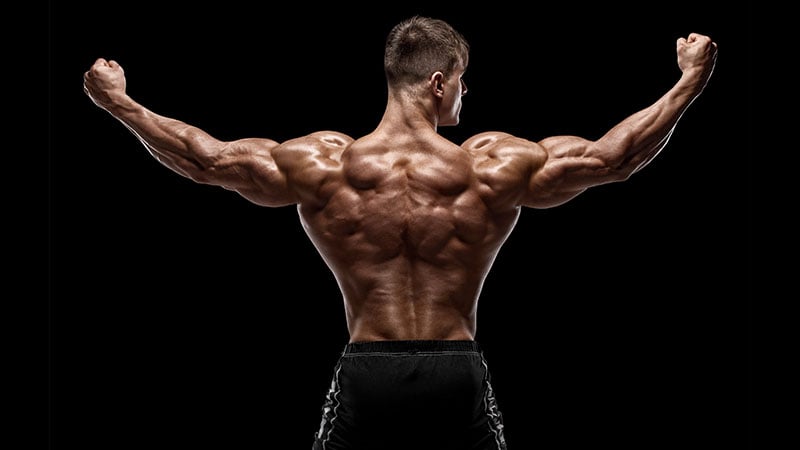
The muscles in your back often get worked by default in other exercises, especially ones for the chest and shoulders. However, to create a strong foundation, excellent mobility, and great posture, it’s vital to give your back muscles individual attention. The ultimate back workout takes care of the large number of muscles that make up your back, including the often neglected ones. You’ll build mass in your lats and traps, as well as turn the focus to the smaller muscles for a well-rounded workout.
Back Muscles
The back is one of the most complex muscle groups in the body and consists of dozens of muscles. They can be divided into three groups — superficial, intermediate, and deep. These layers refer to the depth of the muscles within the back. Most of the exercises below are focused on muscles in the superficial layer, which are some of the largest and most easily worked. Get the low down on these main muscles below. Additionally, because the back cannot work by itself, there are muscles in the shoulders and arms that are regularly engaged when doing a back workout. Knowing how everything fits together will allow you to engage beast mode on back day.
Latissimus Dorsi
The latissimus dorsi, also known as the lats, is the largest muscle in the upper body, stretching from your spine to under your humerus bone. It assists movement in the arms, shoulders, and torso.
Teres Major
The teres major is tucked in beneath the arm and helps rotate the shoulder joint, and raise and lower the arm. It attaches from the lower scapula to the humerus.
Rhomboid
Appropriately named because of their rhomboid shape, these muscles are located under the trapezius and allow movement of the scapula. There’s both a major and a minor rhomboid on each side.
Deltoid
Wrapped around the upper arm is the deltoid muscle. It comprises three muscle heads — the front, side, and rear, and creates movement in the shoulder, and also prevents shoulder dislocation.
Thoracolumbar Fascia
The thoracolumbar fascia is a membrane that sits across your mid and lower back. It’s important because it acts at the attachment point for the trapezius, latissimus dorsi, gluteus maximus, and hamstring muscles.
Trapezius
The trapezius, or traps, dominate the upper back. It attaches at the base of your skull and continues down to the middle of your spine. It facilitates neck and shoulder movement.
Best Back Exercises for Men
Because the back is made up of many muscles, to get the best workout, you need to be targeting all areas, not just the lats or traps. Therefore, the ultimate back workout includes exercises that work the different muscles along different planes of movement. You’ll also want to vary grip, weights, and exercises to train like a real athlete. Our recommendations follow the science of movement from the ATHLEAN-X program, which is run by Jeff Cavaliere. He’s the former Head Physical Therapist and Assistant Strength Coach for the New York Mets. He also has a Masters Degree in Physical Training and is a Certified Strength and Conditioning Specialist. Consequently, he’s very qualified and knowledgable in muscle performance and development.

1a. Barbell Deadlift
Big, compound moves are always a great way to start your back workout. Hitting multiple muscles in one movement, when you’re feeling fresh, allows you to make the most of your beginning-of-workout energy. Plus, these big multi-joint moves are time efficient — you’ve got a lot of muscles in the back, but you don’t want to spend forever at the gym. As such, you’ll start with heavy-weighted deadlifts, which are a great foundational exercise. You’ll complete two sets combined with weighted chin lifts to help decompress the spine. However, before each deadlift set, you’ll need to make sure you’re sufficiently warm, so complete a quick round of straight-arm push downs before each deadlift set.
Execution:
- Start by warming up with straight arm pushdowns. Face your pulley machine, have your feet just wider than hip-width, and torso tilted slightly forward. Keep your arms straight as you pull the handles down toward your body, stopping once the bar hits your thighs. Do 10-12 reps before each deadlift set.
- Moving on to the deadlift, you’ll be using heavier weights for fewer reps, so load the bar appropriately.
- Stand in front of your bar with your feet hip-width apart. You’ll have your knees bent at the bottom of the move.
- Hold the bar in an overhand grip at shoulder width.
- Pull the bar straight up until your body is upright, arms are straight down, and the bar is resting in front of your thighs.
- Your knees will straighten first; then, your body will straighten, tilting at the hips. Keep in mind to keep your back and neck as straight as possible when performing this move.
- Lower the bar back to the ground, with control.
- Repeat for eight, then rest for two minutes.
- After the rest, you’ll move into the weighted chin lifts, before the second set of deadlifts.
- For the second set of deadlifts, repeat the straight arm pushdown warm-up, then do six reps with a heavier weight, and another two-minute rest. Then move to your second set of weighted chin lifts.
Sets: 2
Reps: 8RM/6RM
1b. Weighted Chin Lifts
Weighted chin lifts are an excellent way to decompress the spine after each deadlift set. Plus, being another compound movement, it continues to work the back and upper arm muscles. It’s a classic move that allows you to pile on the weight and lift heavy. This is especially true for your back workout, as you’re only going to do four reps, so be brave and weight up.
Execution:
- Attach your chosen weight around your waist. Make sure you opt for something fairly substantial, as you’re only doing four reps.
- Hold onto the chin-up bar with your palms facing towards you, and hands shoulder-width apart. Keep your body as straight as you can, with your core engaged.
- Start with your arms extended, and pull yourself up, so your chin is above the bar.
- Try not to swing your body to get yourself up; focus on using just your back and shoulders.
- Repeat for four, then return to the first part of this combo — the deadlifts. Warm-up again with the straight arm pushdowns, and then the second set of the deadlifts, before coming back for another eight chin lifts, with a lighter weight.
Sets: 2
Reps: 4RM/8RM
2a. Deadlift
It may seem like deja-vu; however, the second part of the ultimate back workout is a variation of part one. Again, it’s going to be a combo set of big deadlifts and a decompressive move — this time, it’s a wide-grip pullup. You’re only going to be doing four reps with this second round of deadlifts, so add more weight. Keep in mind, because you’re using bigger weights, you’ll still need to keep warm between each set with another quick set of straight-arm pushdowns.
Execution:
- Repeat the instructions above for the straight arm pushdowns. Do 10-12 reps before each deadlift set.
- Moving on to the deadlift, you’ll be using heavier weights for fewer reps, so load the bar appropriately.
- Stand in front of your bar with your feet hip-width apart. You’ll have your knees bent at the bottom of the move.
- Hold the bar in an overhand grip at shoulder width.
- Pull the bar straight up until your body is upright, arms are straight down, and the bar should be testing in front of your thighs.
- Your knees will straighten first; then, your body will straighten, tilting at the hips. Keep in mind to keep your back and neck as straight as possible when performing this move.
- Lower the bar back to the ground, with control.
- Repeat for four, then rest for 30 seconds.
- Then, you’ll move into the wide grip pullups, before the last set of deadlifts, which will need another straight arm pushdown warm-up. The final set is four reps with a heavier weight and another 30-second rest.
Sets: 2
Reps: 4RM/4RM
2b. Wide Grip Pullup
Wide grip pullups are another great multi-joint exercise that also decompresses the spine. Doing a wide grip, compared with a narrow grip, will allow you to hit the teres major muscle better. However, for this set, you’re dropping the weight altogether, and just using your body weight.
Execution:
- Hold onto the chin-up bar, with your palms facing away from you. Have your hands out wider than shoulder-width. Keep your body as straight as you can, with your core engaged.
- Start with your arms extended, and pull yourself up, so your chin is above the bar.
- Try not to swing your body to get yourself up; focus on using just your back and shoulders.
- Repeat until failure, then return to the first part of this combo. Warm-up again with the straight arm pushdowns, and then the second set of the deadlifts, before finishing with another bodyweight set, to failure, of the wide grip pullups.
Sets: 2
Reps: To failure, using bodyweight only
3. Barbell Dead Rows
The next exercise in the ultimate back workout is barbell dead rows. This uses similar mechanics to the previous deadlifts. However, you’ll use slightly lighter weights, which in comparison to the weights in your deadlifts, will seem considerably lighter. As such, this allows you to train more explosively.
Execution:
- Stand in front of your bar with your feet hip-width apart. You’ll have your knees bent at the bottom of the move.
- Hold the bar in an overhand grip at shoulder width.
- Pull the bar straight up, from the ground, until it reaches your stomach. Unlike the deadlift, you’ll keep your body bent at the hips, in a row stance, so your elbows should pull back behind your body.
- Lower the bar back to the ground.
- For this move, because you’re training explosively, you should be pulling the bar quickly up, but still focussing on contracting your back muscles to achieve the row. The weight should be heavy enough that you max out at 10 to 12 reps.
- Repeat for eight to 10 reps for two to three sets.
Sets: 2-3
Reps: 8-10
4. Alternating High Pulley Row
Alternating high pulley rows specifically put the focus on your lats. This exercise takes them through their full range of motion to get the most out of the workout. Plus you’re also going to get a bit of rotation on the back as you shift your feet, which adds to the lat contraction.
Execution:
- Stand facing the cable machine, with the pulley set up high. You’ll start with your feet hip-width apart.
- Hold the cable in one hand, palms facing in.
- Step your foot back, on the same side that you’re holding the cable and pull the cable all the way out until your hand is in line with your chest. Keep your elbow tucked in.
- As you release the cable back up, return your foot to the original position.
- Swap the cable to the other hand, as the cable reaches head height. You should feel your lats reach a full extension at this point, so you don’t need to release the cable back to the top for this exercise.
- Repeat the pull on the second arm, again stepping the foot back on the same side.
- Continue to alternate arms, doing 10-12 reps on each arm, to failure, for two to three sets.
Sets: 2-3
Reps: 10-12RM to failure on each arm
5. Hyper Y/W
Now that you’ve tackled some of the big hitter muscles, it’s time to shift the attention to the smaller muscles in the back. Filling the gaps by explicitly targeting the areas that don’t get hit enough, will elevate your workout. Plus, these corrective exercises allow the muscles to develop correctly to ensure shoulder stability, proper function, and excellent mobility. A set of hyper Ys and Ws is just the trick. The Ys will target the lower traps, activating them correctly. Then, Ws work the muscles of the rotator cuff by externally rotating the shoulder.
Execution:
- Grab two weight plates or barbells that you can comfortably hold in your hands.
- Lay facedown across a physioball, holding the weights in front of your chest. Stabilize yourself by planting your feet, just wider than hip-width apart, toes gripping the ground.
- You’ll want to be able to raise your upper body, so position the ball towards your lower stomach. Begin with your upper body relatively relaxed over the ball, face near the ground.
- Starting with a Y, lift your torso, extending your arms out straight, into a Y shape. Pull your body and arms back, as far as they can comfortably go so that you can feel a full contraction in your muscles. Singing The Village People’s YMCA is optional but recommended.
- Release and lower your body back down, bringing your arms back in front of your chest.
- Next is the W. Again, lift your torso, this time forming a W with your arms. Keep your elbows bent, so your hands stay in line with your head. Rotate your shoulders out as far as they can go. You should feel a substantial contraction between your shoulder blades.
- Release and lower your body back down, bringing your arms back in front of your chest.
- Continue to alternate between the Y and W, completing 14-20 reps.
Sets: 2
Reps: 14-20, alternating between Y and W
6. Barbell Shrugs
The lucky last exercise for your ultimate back workout is for the upper traps. Barbell shrugs are a great way to engage these muscles and build mass. You can either hold the bar a little wider to mirror the direction of the fibers in the muscles or hold it narrower if that’s more comfortable. The killer part of this grand finale is that you’ll do the shrugs as a ladder to 10.
Execution:
- Hold the bar in an overhand grip at your desired width.
- Keeping your arms straight, shrug your shoulders up.
- Begin with one shrug, and hold it at the top for one second.
- Lower the bar back down.
- Next is two shrugs. However, on the second shrug, hold it at the top for two seconds.
- Release.
- Then do three shrugs. On the third, hold it at the top for three seconds.
- Continue to build the ladder, with four shrugs and a four-second hold, then five and five, until you reach 10 shrugs with a 10-second hold.
- If you find yourself struggling to complete any of the shrugs or the holds, feel free to put the bar down and take a momentary rest before continuing.
- If you’re a proper sucker for punishment, you can ladder back down from 10.
Sets: 1
Reps: Ladder to 10 reps
FAQs
What are the best exercises for the back?
There are many complex muscles in the back, so to get the best workout, you need moves that target all areas across different planes of movement. The best exercises for your back include barbel deadlifts, weighted chin lifts, wide-grip pull-ups, barbell dead rows, alternating high pulley rows, hyper Y/W, and barbell shrugs. Focus on good form and activating the muscles you’re targeting for the best results.
What back exercises can I do at home?
Equipment-free exercises you can do to build strength in your back include supermans, Y/W supermans, back extensions, reachers, variations of pushups, prone arm circles, and quadruped arm and leg extension. If you have access to weights, whether it’s dumbbells or kettlebells, you can mix it up with different moves. Try lateral raises, different variations of rows, and kettlebell swings,
How do you work out your back?
To work out your back, you want a combination of exercises that puts all of your back muscles through their full range of movement. Ideally, you’ll target your lats, traps, delts, rhomboids, and teres major, as well as the smaller, less-used muscles in your lower back. Try combining barbell deadlifts, weighted chin lifts, wide-grip pull-ups, barbell dead rows, alternating high pulley rows, hyper Y/W, supermans, and barbell shrugs. Your reps will vary depending on the weight you’re lifting, but try to get two sets of each into your workout.
Do push-ups work back?
While the arms and chest are usually the focus of a pushup, they can also work the back muscles. This is especially true with a proper form where you focus on engaging your core and retracting your shoulder blades as you rise. You can also increase the work you back does by mixing up your style. Try a wide-grip, T, or scapular pushup to shift the focus.
How do I get the V shape?
To get the very masculine V-shaped body, you need to build strength and mass in your lats and delts while keeping a trim waist and core. As such, you’ll want to work on both your shoulders and back, as well as your abdominals.

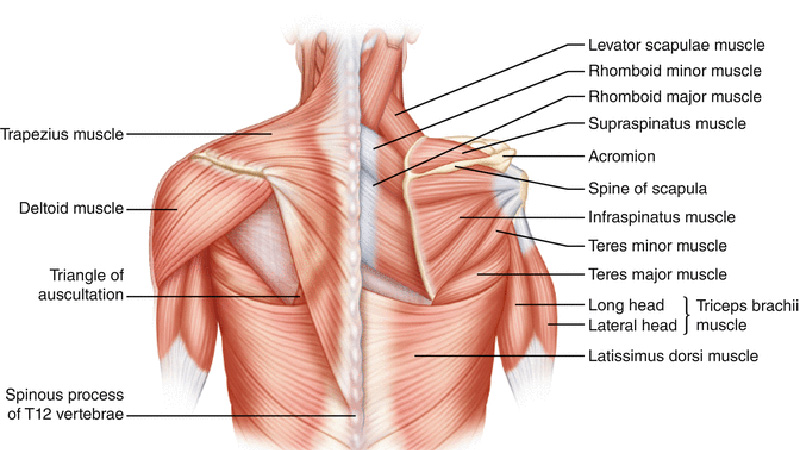
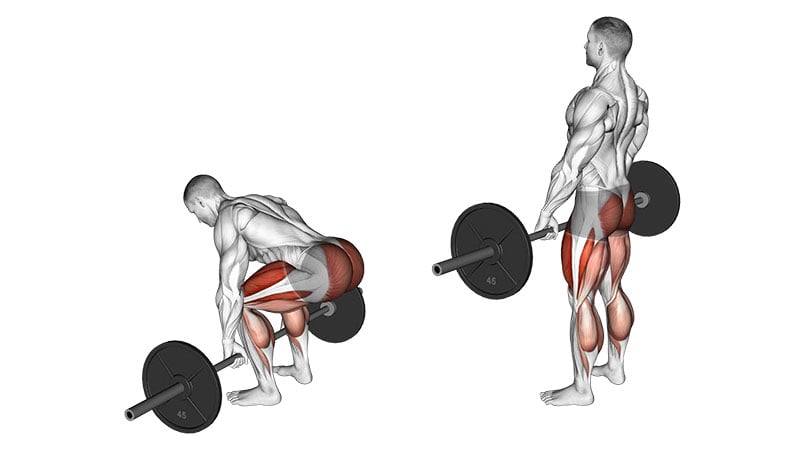
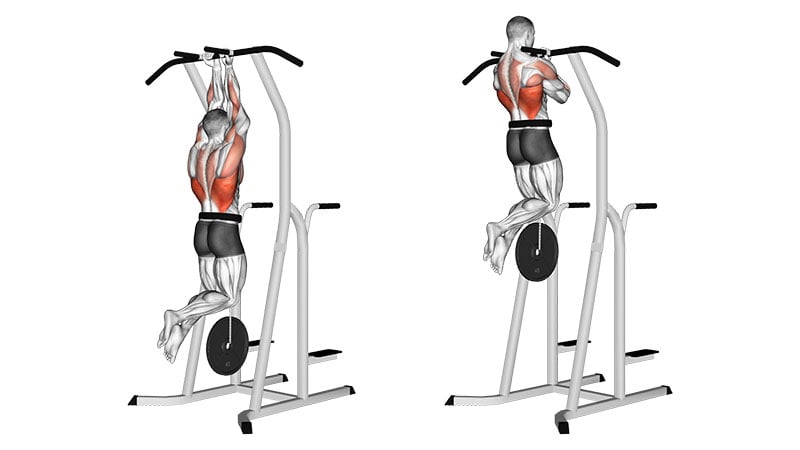
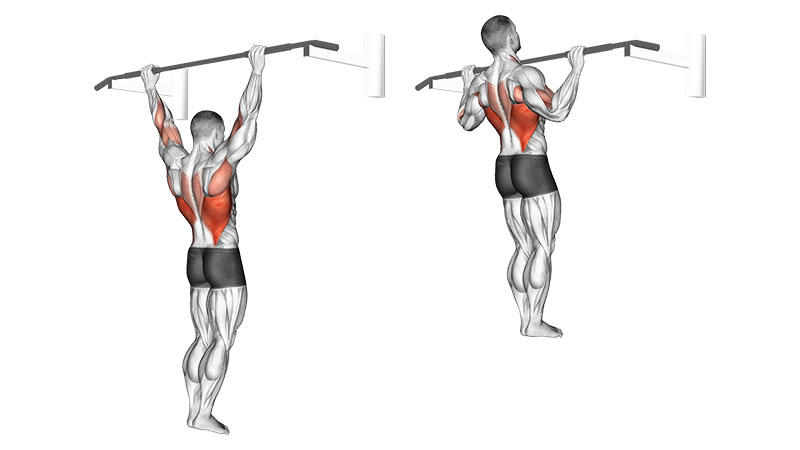
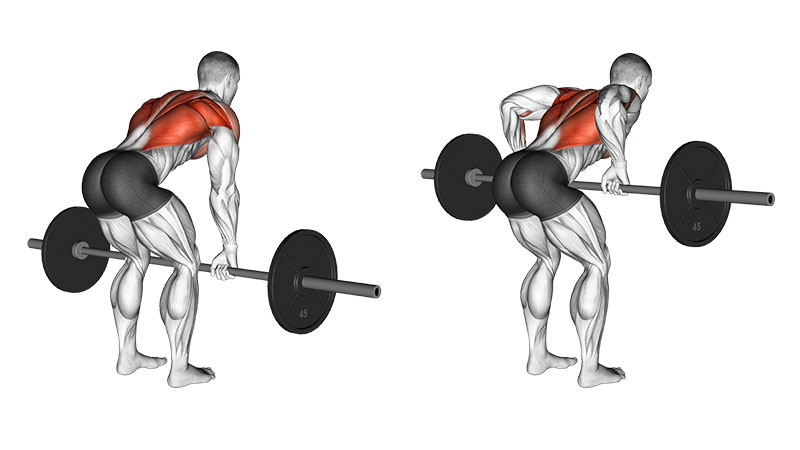
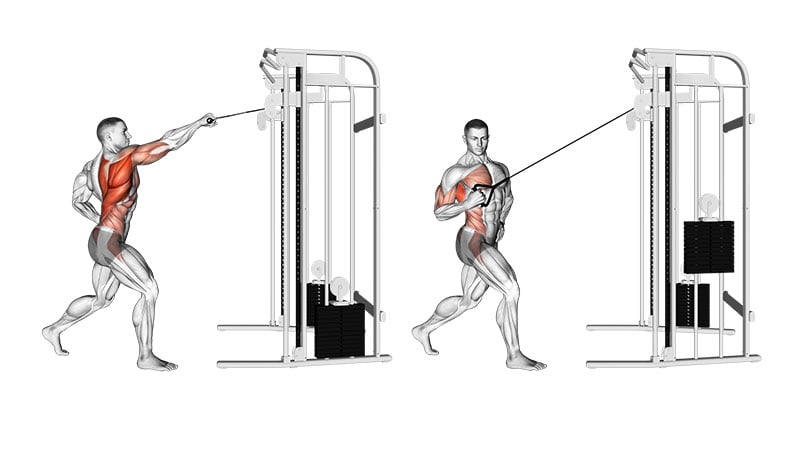
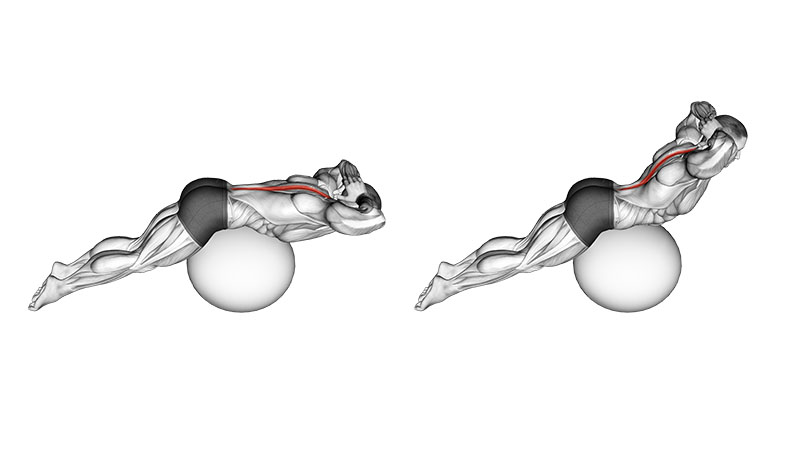
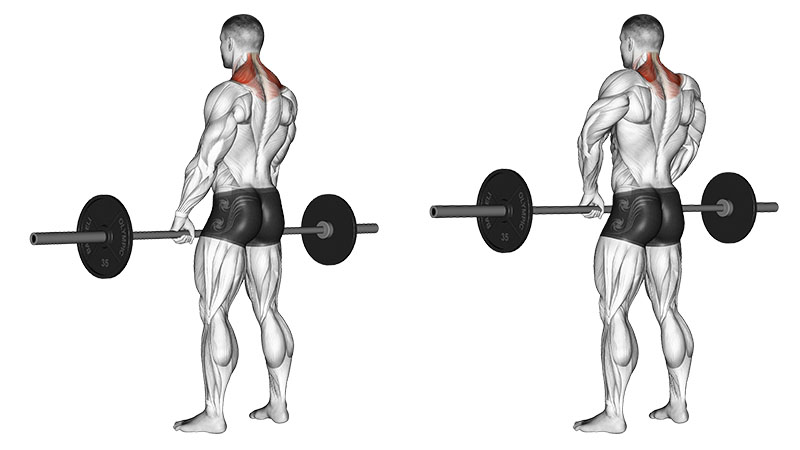
Enregistrer un commentaire